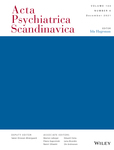Gestational exposure to benzodiazepines or z-hypnotics and neurodevelopmental disorders in offspring: Systematic review and meta-analysis
Abstract
Introduction
Benzodiazepine (BDZP) and/or z-hypnotic dispensing during pregnancy has increased globally, as have rates of autism spectrum disorder (ASD) and attention-deficit hyperactivity disorder (ADHD). This systematic review and meta-analysis aimed to estimate the association between gestational exposure to BDZP and/or z-hypnotics and diagnosis of ASD or ADHD in offspring.
Methods
We searched MEDLINE, EMBASE, and SCOPUS from inception till December 2023 for relevant English-language articles. Outcomes of interest were risk of ASD and ADHD, two independent primary outcomes, in children exposed anytime during pregnancy to BDZP and/or z-hypnotics versus those unexposed. Secondary outcomes were trimester-wise analyses. Using a random effects model, we pooled the overall and trimester-wise hazard ratios (HRs), with 95% confidence intervals (CIs), separately for risk of ASD and ADHD.
Results
We found six eligible retrospective cohort studies and no case–control studies. There was no increased risk of ASD associated with anytime gestational BDZP and/or z-hypnotic exposure (primary outcome, HR, 1.10; 95% CI, 0.81–1.50; 4 studies; n = 3,783,417; 80,270 exposed, 3,703,147 unexposed) nor after first trimester exposure (HR, 1.15; 95% CI, 0.83–1.58; 3 studies; n = 1,539,335; 70,737 exposed, 1,468,598 unexposed) or later trimester exposures. A very small but significantly increased risk of ADHD was noted with anytime gestational exposure to these drugs (primary outcome, HR, 1.07; 95% CI, 1.03–1.12; 4 studies; n = 2,000,777; 78,912 exposed, 1,921,865 unexposed) and also with (only) second trimester exposure (HR, 1.07; 95% CI, 1.03–1.12; 3 studies; n = 1,539,281; 33,355 exposed, 1,505,926 unexposed). Findings were consistent in sensitivity analyses.
Conclusion
Gestational exposure to benzodiazepines or z-hypnotics was not associated with an increased risk of ASD and with only a marginally increased risk of ADHD in offspring. Given the likelihood of confounding by indication and by unmeasured variables in the original studies, our findings should reassure women who need these medications for severe anxiety or insomnia during pregnancy.

 求助内容:
求助内容: 应助结果提醒方式:
应助结果提醒方式:


